I made my first weaving using two extra photographs that didn’t make my photo wall. I picked these two in particular to weave together because they were both images of the sky just taken at different times of the day. The first is a photo of the stars that I took at an astronomy village, and the second is a photo of a sunset at the beach.
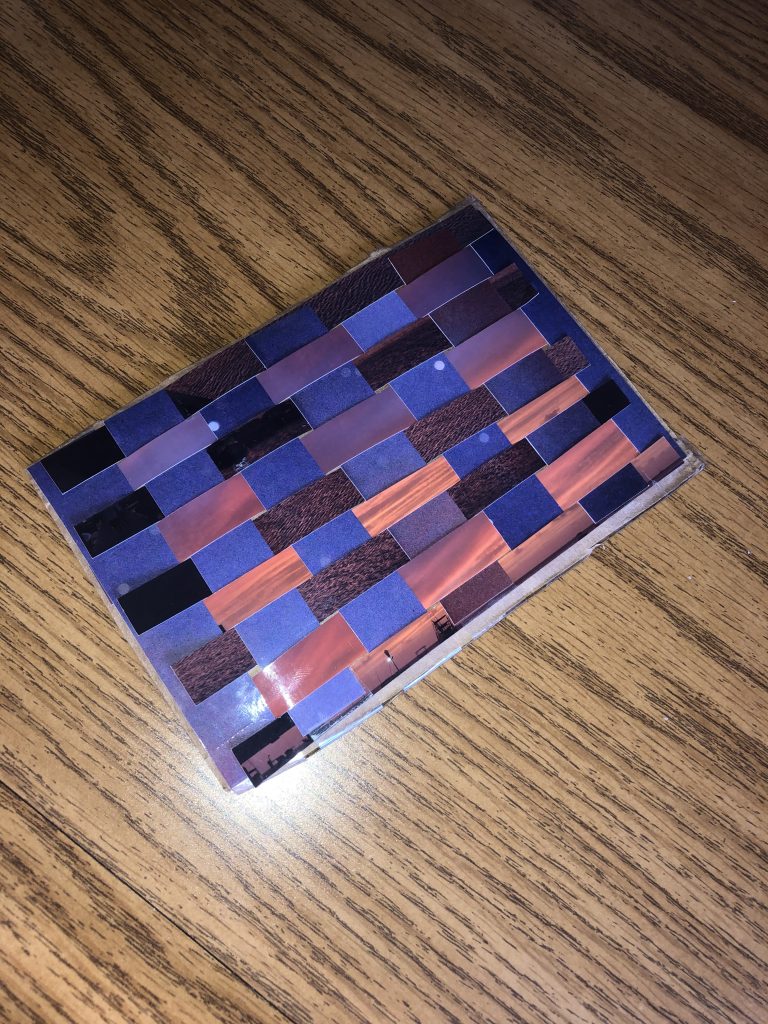
When I cut the photos into strips, I became more aware of the different textures and colors found throughout the scenes. After noticing these differences, I decided to weave the photos “out of order.” The middle strip features the rougher water texture from the sunset picture, and I think it provides a nice contrast with the smoother clouds in the starry night image. I was surprised to notice more characteristics of my photos as I converted them into my warp and weft materials.
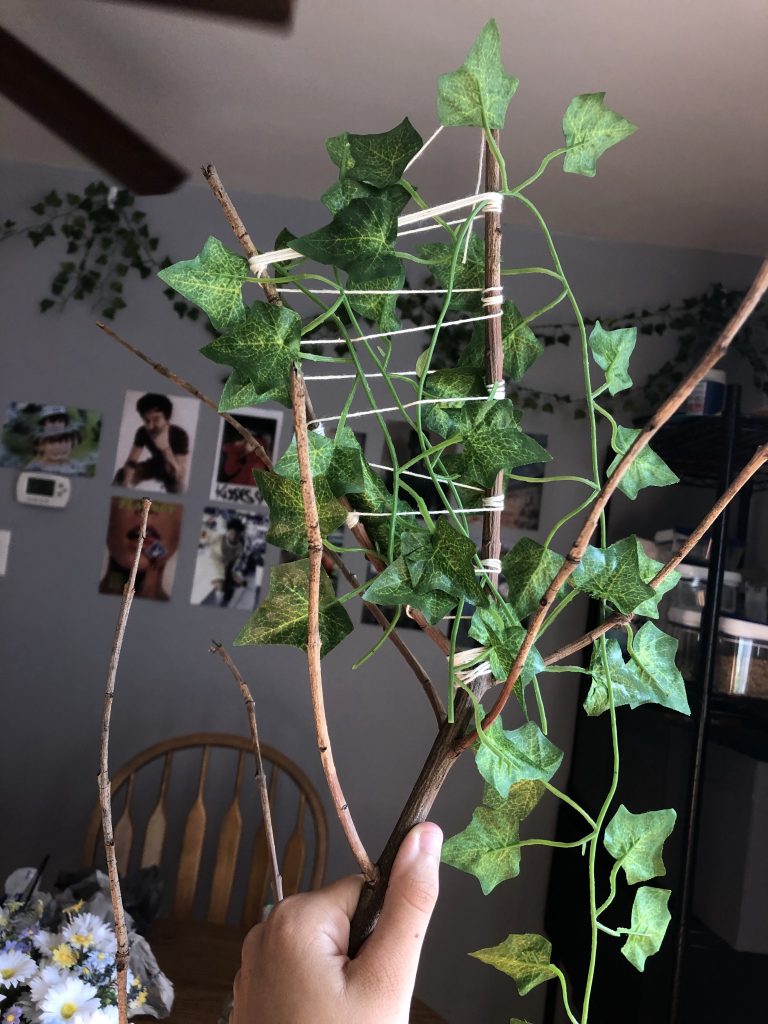
I had the idea of weaving natural and synthetic objects together, so I went outside to grab a branch as a loom. I cut a strand of fake ivy to use as the weft, and I chose twine as the warp because it was easy to maneuver the plastic leaves through it.

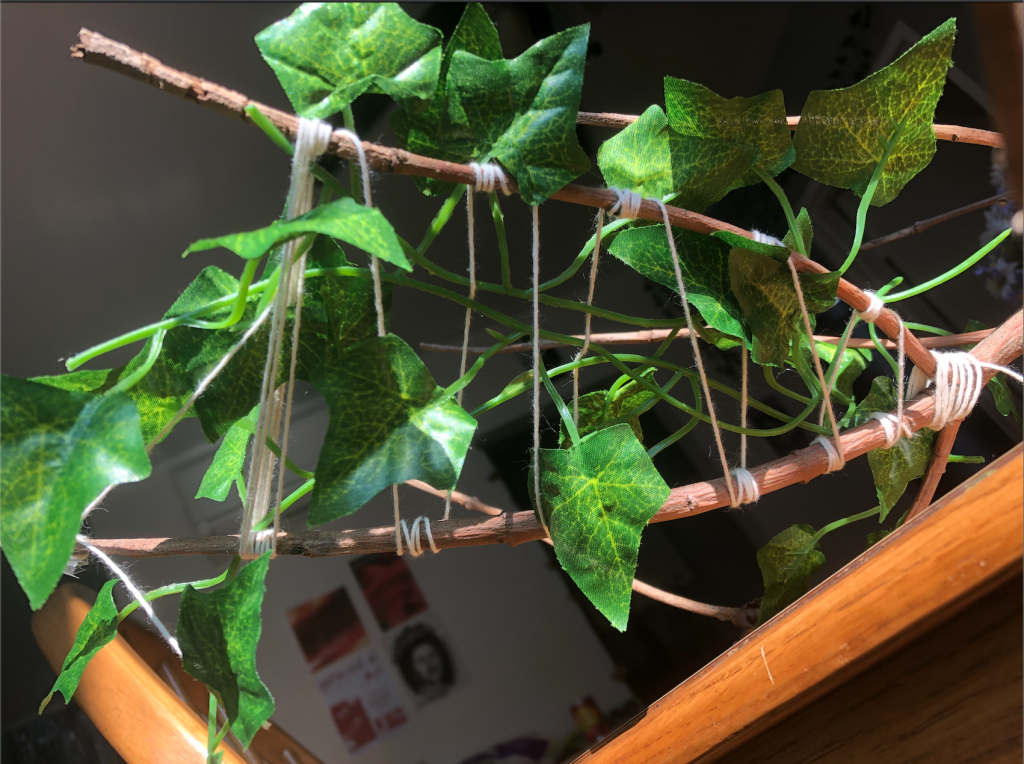
I was surprised by the flexibility of the branch, but it was actually helpful in wrapping the warp and weaving the weft. The leaves made it difficult to avoid weaving through the back side of the warp, but overall they provided a fun extra element to the piece.
I think it would be interesting to hang this particular weaving like a mobile. That would provide a unique way of viewing the piece, give a little bit of movement, and help to accentuate the natural forms of the branch. The process of making this piece has further sparked ideas for how to alter weavings after their construction.
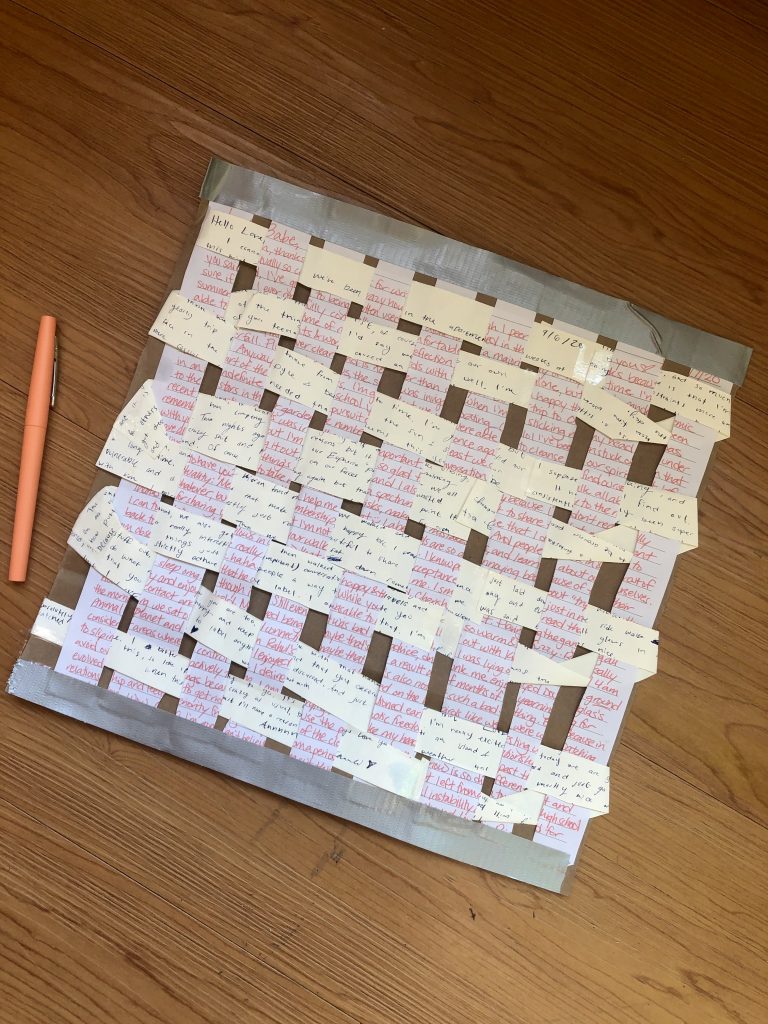
This piece was really fun to make! My friend responded to my last letter to her from this past summer, and I was able to weave our conversation together. There were differences between the paper types that made the strips uneven, so this weaving is not as compact as the one made with photographs, but the unevenness has grown on me. I debated cutting the excess letter weft to start new strips below the one prior like I did with the photographs, but I instead decided to fold the strip on the end to make it feel more continuous. This decision contributed more to the gaps in my weaving, but I still like the way it flows.

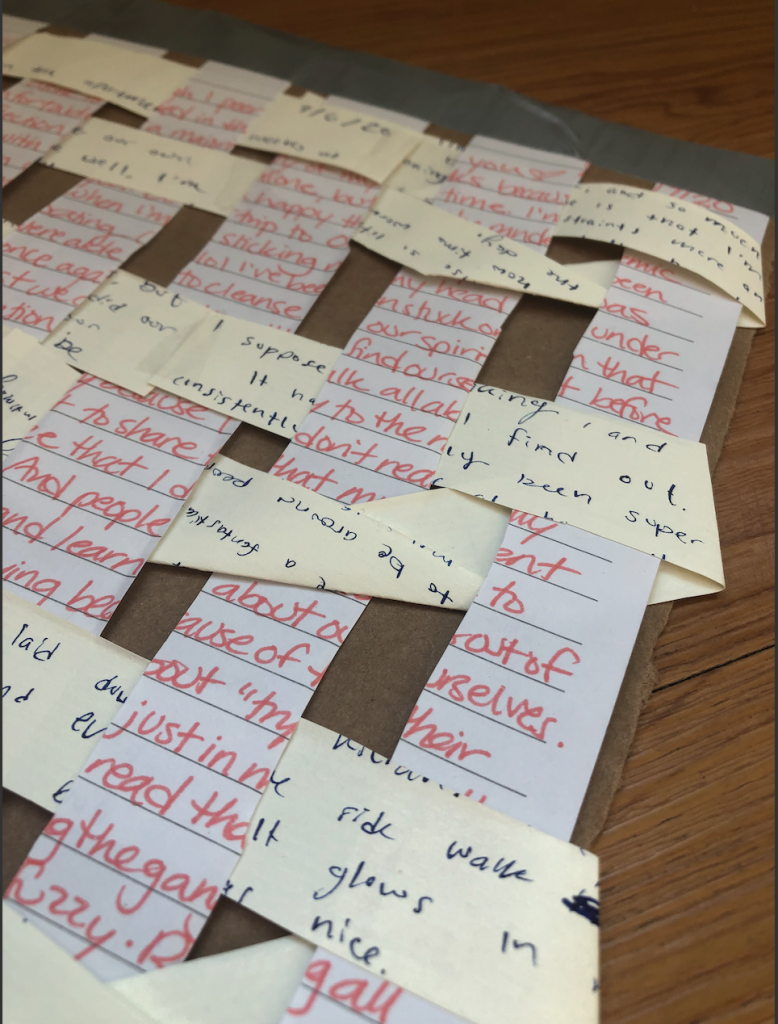

I struggled with getting my letter to stay in place evenly as the warp, so I switched from using regular tape to duct tape . I was also hoping that some of our sentences would perfectly align, but that wasn’t really the case. Still, our different handwriting, ink color, and paper texture made the final product really interesting as a whole. I think the weaving captures the exchange and our voices well, and it gave me an opportunity to play with more conceptual ideas.
